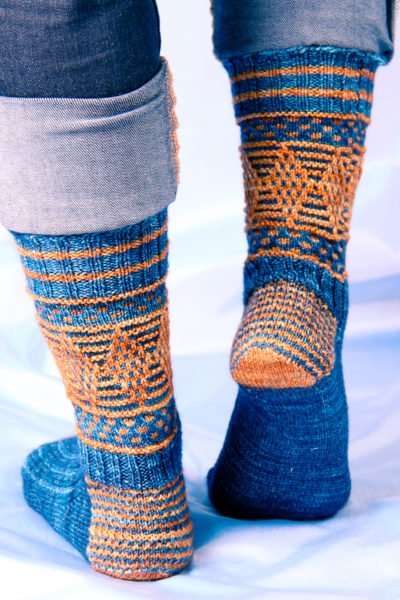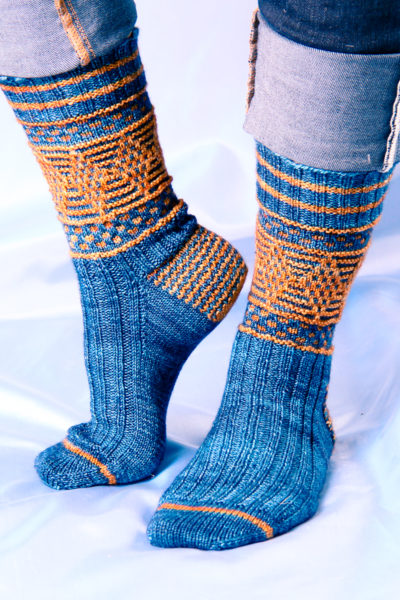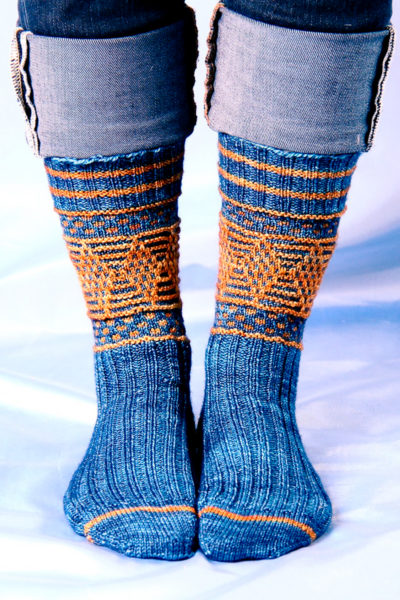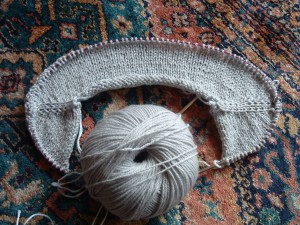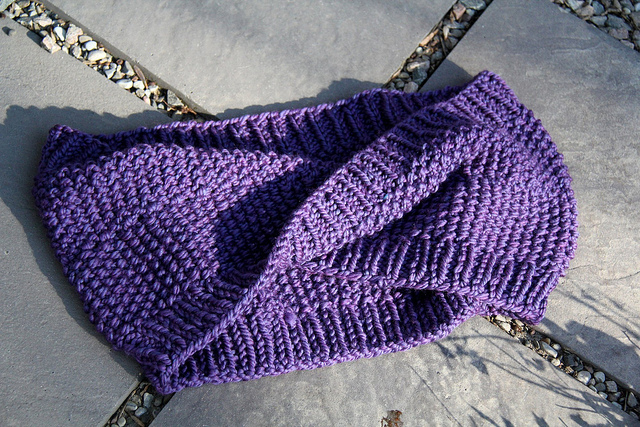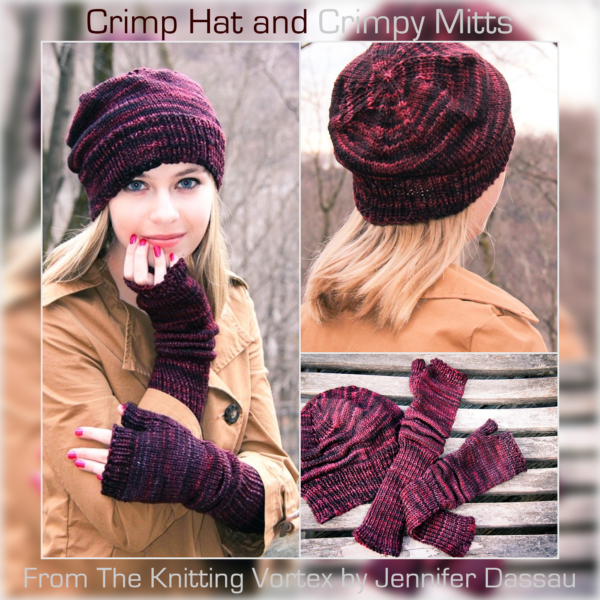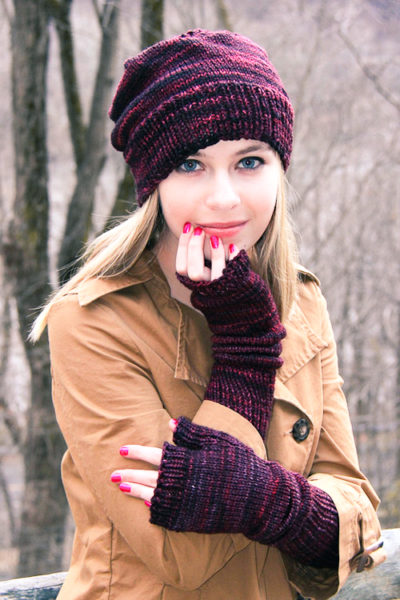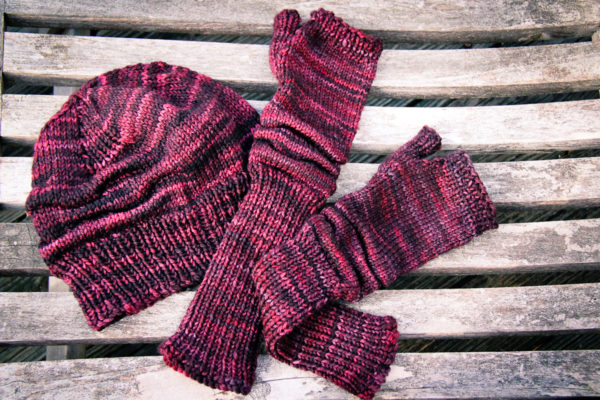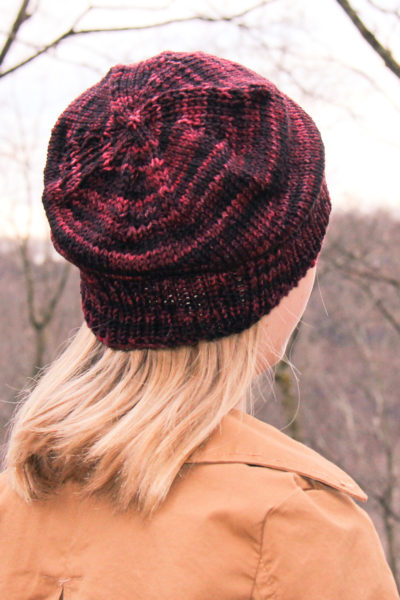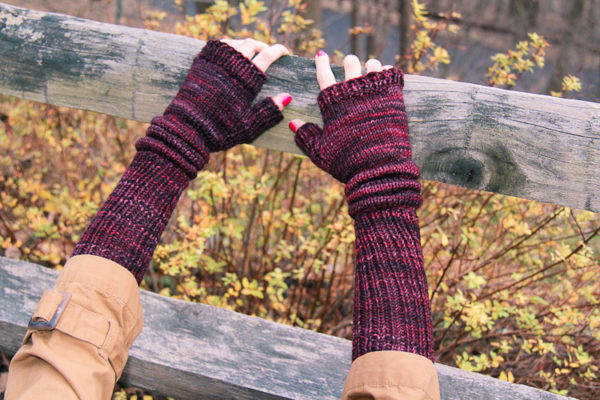
A tribute to the Quidditch players of Harry Potter’s Wizarding World, or to any sock-loving Muggle, these colorwork socks are knit from the cuff down with a heel flap and gusset. The simple slipstitch technique requires working only one color at a time per row. Show your House colors with pride!
Techniques & Skills Used: longtail CO, knit/purl, increasing/decreasing, slipstitch colorwork, knitting in the round, grafting; this pattern includes both charts for the colorwork and full written instructions.
Size: S (M, L); 60 (68, 76) st; to fit 10 (11, 12)” calf, or Women’s US 6/7 (8/9, 10/11) shoe size; shown in size M.
Yarn: Madelinetosh Tosh Sock (100% superwash merino wool; 395 yards/114g); 1 skein each, or approximately 215 (240, 265) yards MC and 70 (80, 90) yards CC. Sample shown in Baltic (MC) and Ginger (CC).
Other Materials: US 1 (2.25mm) dpns, or 32” circular needle if using Magic Loop, or size to match gauge; Stitch markers (3); Yarn needle.
Gauge: 34 st and 48 rows/4” in stockinette stitch; 36 st and 48 rows/4” in Checkerboard slipstitch pattern; 34 st and 68 rows/4” in Diamond Stripe slipstitch pattern, after blocking. Slipstitch colorwork is very dense; the slipstitch rows are also somewhat difficult to measure, as one slipped stitch represents two rows. The best way to measure for fit is to try on the sock.
See it on Ravelry or on Payhip, to read more or purchase the pattern. 

